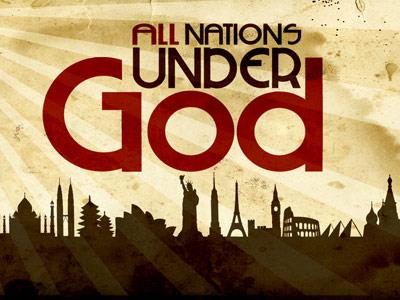-
Will Christians Go Through The Tribulation Period? (Viii) Series
Contributed by Richard Tow on Feb 23, 2021 (message contributor)
Summary: Olivet Discourse is examined as the relationship of the rapture to end-time events is analyzed. Exegetical challenges found in Matthew 24 and the parallel passages are discussed. This study focuses on Matthew 24:1-14.
We have been seeking to answer the question: Will Christians go through the tribulation period. This is the eighth message in the series. In this session we will begin an analysis of the Olivet Discourse. The Olivet Discourse is Jesus’s prophetic message recorded in Matthew 24, Mark 13, and Luke 21. It is the most important teaching on end-time prophecy. In it, Jesus provides the overall structure of how history will unfold as it progresses toward the second coming. We will concentrate on Matthew’s account since it has the most end-time material.
I. CHALLENGES in Interpreting the Olivet Discourse:
Before we launch into this study, we must acknowledge some of the challenges in interpreting this portion of Scripture. “Many scholars have claimed that the Olivet Discourse is the most difficult portion of the gospel to interpret.”i D. A. Carson says, “Few chapters of the Bible have called forth more disagreement among interpreters than Matthew 24 and its parallels in Mark 13 and Luke 21.”ii
Why is that so?
(1) The prophetic nature of the material allows for dynamics that we don’t find in in the less ambiguous genres like the epistles. In prophetic material we often have “the law of double reference” at work. We talked about that in our first message. There is often in prophecy a partial fulfillment as a foreshadowing of the complete fulfillment in the future.
In Acts 2:16 Peter quotes Joel 2:28-32 and identifies the events on the Day of Pentecost as a fulfillment of the Joel’s prophecy 2:28-32. But it was only a partial fulfillment. Joel 3:1 continues the prophecy: “For behold, in those days and at that time, When I bring back the captives of Judah and Jerusalem, 2 I will also gather all nations, And bring them down to the Valley of Jehoshaphat; And I will enter into judgment with them there On account of My people, My heritage Israel, Whom they have scattered among the nations; They have also divided up My land.” That part of the prophecy has not been fulfilled. Peter rightly points to the prophecy as predictive of the Acts 2 event. But Acts 2 was not the final, complete fulfillment. In his discussion of this, Gundry writes, “The fulfillment of Pentecost must therefore be the first or precursive part of a double fulfillment.”iii
We have similar pattern in Jesus’s prediction of the abomination of desolation (Matt. 24:15). Its ultimate fulfillment will happen in the middle of Daniel’s 70th week at the end of the age. Paul deals with the event in 2 Thessalonians 2:3-4 and John deals with it in Revelation 13. However, there was a portend to this ultimate event in 70 A.D. at the destruction of the temple. The destruction of the temple foreshadowed events that would occur at the end of the age. While the destruction of the temple is addressed in the Olivet Discourse, the thrust of the narrative moves toward the final consummation preceded three and a half years earlier by the abomination of desolation.
This double application in the discourse must be understood for an accurate interpretation. Gundry identifies Payne’s failure to do this as a fundamental error in that commentary. Gundry writes, “Yet, Payne must disjoin these verses from the end of the age in order to maintain that the fall of Jerusalem exhausted them and at the same time escape the fact that Jesus did not return ‘immediately after’ A.D. 70 . . . we should say that ‘the tribulation of those days,’ ‘immediately after’ which Jesus returns, has to do with a period of persecution and upheaval connected with a yet future abomination of desolation and only foreshadowed by the events during A.D. 66-70.”iv The double application of some of the Olivet material makes the passage challenging to exegete.
(2) Another factor affecting our interpretation of this discourse is the fact that Jesus Himself did not know the day of His return. We tend to read the passage as if that were not the case. But Jesus plainly told us that in the middle of this prophecy. Matthew 24:36: “But of that day and hour no one knows, not even the angels of heaven, but My Father only.” Mark 13:32 is more specific. “But of that day and hour no one knows, not even the angels in heaven, nor the Son, but only the Father.” That tells us something about the full humanity of Christ in His incarnation. But even more relevant it tells us that Jesus gave this prophecy not knowing that piece of information. Craig Blaising observes how the uncertainty of that timing accounts for the way the predictions in the Olivet Discourse are framed. The return occurs at the Father’s command, no sooner, and no later. This factor of imminence affirms the command for all the followers of Christ whether in the first century or the 21st century to “be ready, for the Son of Man is coming at an hour you do not expect” (Matt. 24:44).v

 Sermon Central
Sermon Central



